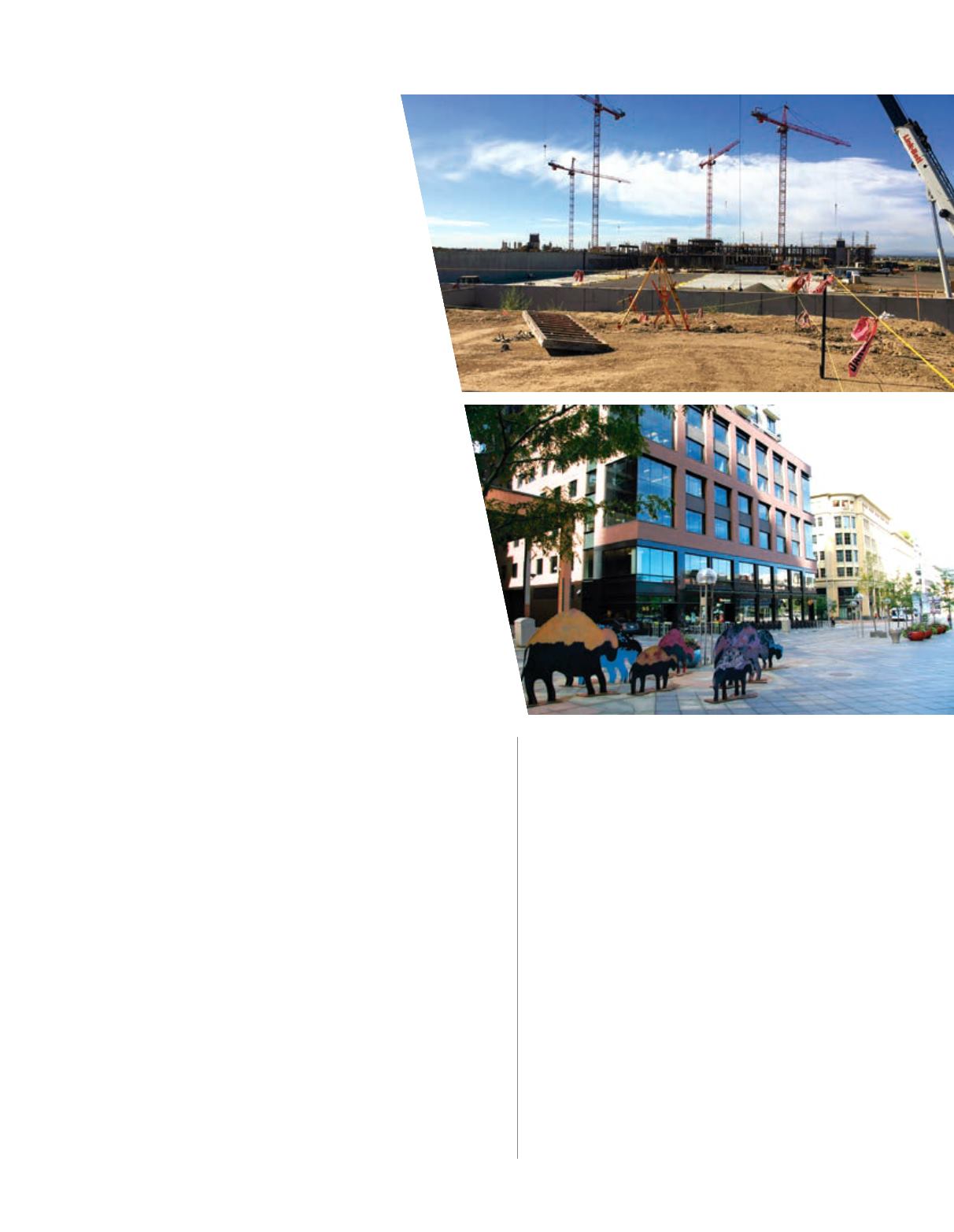

64
/ BUILDING DIALOGUE / MARCH 2017
foundations and structural floor systems. As
a result of this information, developers could
build homes in formerly high-risk areas near
hogbacks and one-time coal mines. Shoring up
exterior flatwork and garage slabs followed. In
the 1990s, after tireless laboratory and field ef-
fort, our team began to excavate expansive soils
and replace them with moistened fill, reducing
expansion potential and improving the perfor-
mance and safety of slab-on-grade foundations,
basement slabs and garages.
The advancements used in residential building
ultimately opened a path for commercial develop-
ment growth. Extensive soil testing provided a bet-
ter understanding of soil heave conditions that can
affect low- to medium-rise commercial office, ware-
house, industrial and retail buildings. At the same
time, a better understanding of the support charac-
teristics of the bedrock underlying central Denver has
also allowed for economically practical solutions that
support buildings with heavy loads, such as office, and
paved the way for many of the high-rises currently un-
der construction in all sectors – office, residential, hotel
and retail.
Geotechnical engineering solutions have “paved the
way” for new building and actually have paved the road
to make construction possible in new developments. Most
recently, our geotechnical team, supported by our materials
testing division, designed an access road for construction
on the Gaylord Rockies Resort and Convention Center, one
of the area’s largest hospitality projects under construction.
When Gaylord work began, insufficient construction roads
could not support heavy concrete trucks, which sank into the
ground, causing major delays. Together with Mortenson Con-
struction, we chemically stabilized the soil under the access
roads, repaved them with asphalt and created a thoroughfare
to allow construction to continue with minimal delay to com-
plete the hotel, proposed to generate more than $7 million in
economic activity annually once open.
Sites like the Gaylord Resort’s 85 undeveloped acres are un-
common, however. Luckily, as the metro area expands, so do
engineering methods that can create developable land from
brownfield and infill sites, creating economic opportunity on
land that was formerly barren and untouchable. For example,
through sound testing and creative engineering, Metropolitan
University completed its Regency Athletic Complex on a for-
mer chemical facility, and the Community College of Denver
constructed its Student Learning and Engagement Center on a
site that once housed a gas station, a streetcar substation and
a biscuit factory. Le Meridien Denver Downtown could quickly
work around an unexpected dormant foundation thanks to an
environmental assessment, and Taxi is now the workplace of dy-
namic new energy companies thanks to remediation of the old
Yellow Cab facility and solid waste landfill formerly on the site.
In 2016, the Metro Denver Economic Development Council
reported that more than 7.4 million square feet of commercial
real estate space was completed, a whopping 45.4 percent in-
crease over 2015. Jobs continue to be added to the economy at
a pace that is keeping up with the net increase in migration.
Given these stats, developable land – and the soils and rocks that
comprise it – will stay in great demand. Developers and builders
can count on the engineering community, which is geared up
with tools and techniques to ready raw land for construction
and make old land new again.
\\
/ Geotechnical Practices Laid Groundwork for Colorado’s Growth /
PHOTOS:
CTL|Thompson
OPENING ART:
CTL|Thompson turned a brownfield site littered with
environmental hazards and detritus into developable
land that now holds Metro State College of Denver’s
Student Success Building.
ABOVE TOP:
CTL was hired to manage much of the ground
work for Gaylord’s initial construction phase, but
after concrete trucks sunk, the team shored up
the ground with chemical stabilization, a solution
usually used on permanent roads.
ABOVE BOTTOM:
On 16M, CTL’s concrete experts found a solution for
concrete that wasn’t meeting compressive strength,
shoring up the 340,000-square-foot building.
RIGHT:
During work on the 31-story One Lincoln Park....
condominium tower at 20th and Lincoln streets,
fuel tanks were found buried on the site. CTL
recommended abatement strategies and now the
iconic tower houses some of the hottest condos on
the market.
















